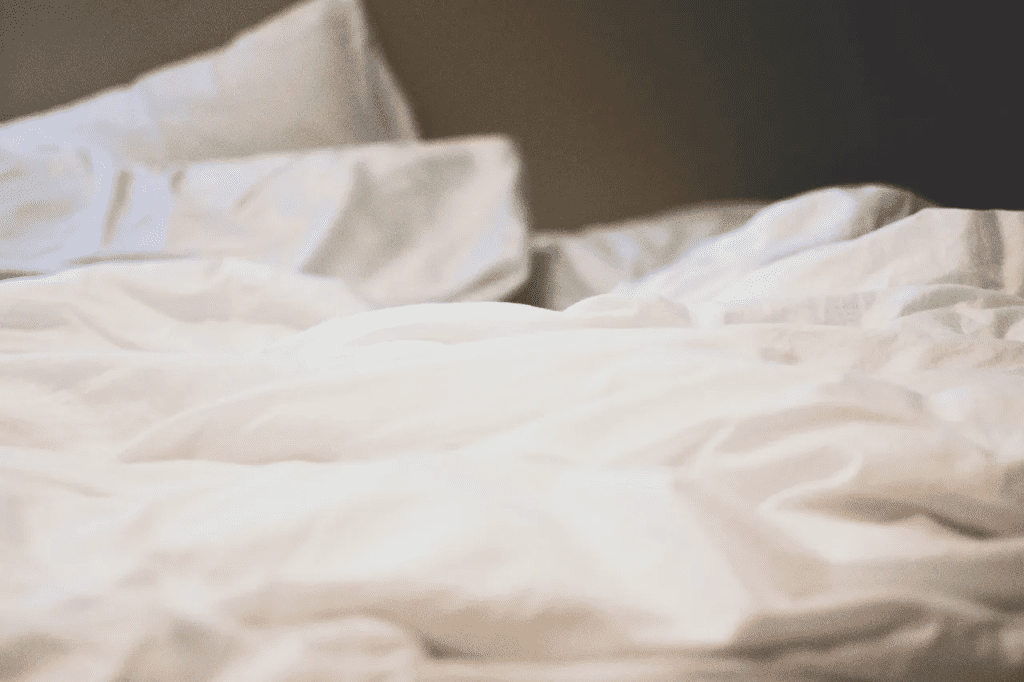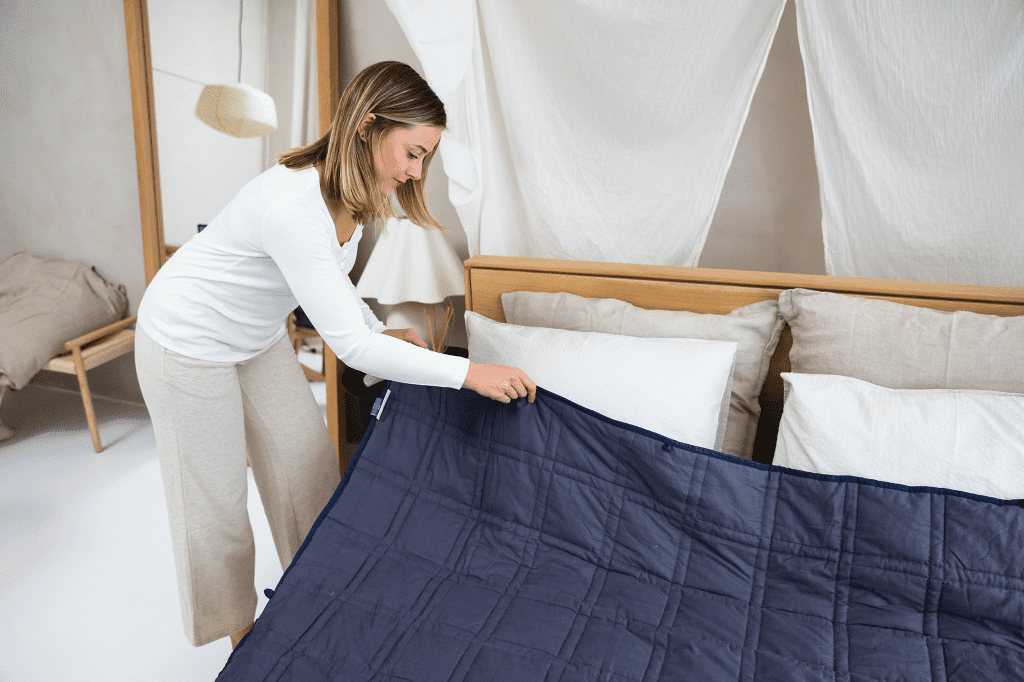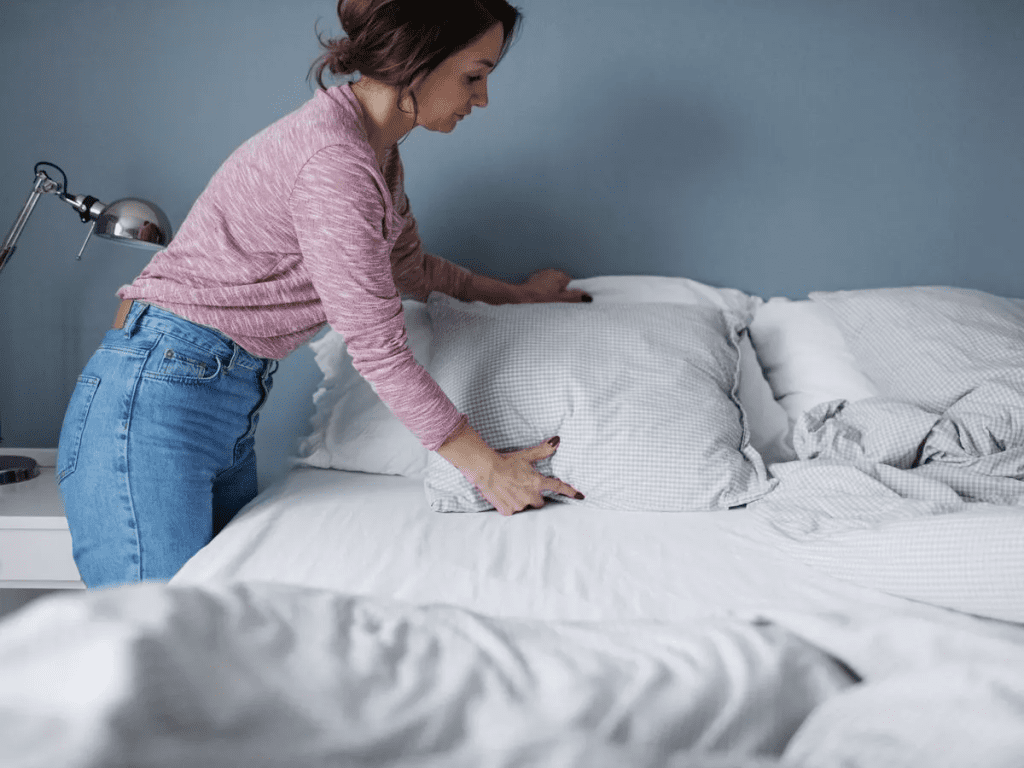Making the bed seems like a straightforward process: wash, dry, and tuck in the sheets for a crisp, comfortable sleep. However, if your husband learned from his mother to use damp sheets on the bed, you may be wondering: is there any logic to this approach? Surprisingly, using slightly damp sheets has a rationale, rooted in history and practicality, and could offer certain benefits—if you’re open to it. Let’s unpack this unique practice and see if it’s something you might want to try.
Understanding the Technique of Using Damp Sheets

Using damp sheets essentially means putting sheets on the bed that aren’t fully dried. Instead of waiting for the dryer or sun to finish the job, the sheets are placed on the bed with just a hint of moisture left in them. The sheets are then smoothed out to air-dry on the bed, which can create a wrinkle-free, cooler surface. While this might seem like a shortcut, the goal is often to have smoother sheets without ironing, saving time and offering a touch of cooling comfort in the process.
Historical Roots of the Damp Sheet Technique
The tradition of using damp sheets has historical roots, especially in regions where humidity levels were high or access to modern drying methods was limited. Before the widespread availability of dryers, many people relied on air-drying their sheets, which sometimes left a bit of residual dampness. In warm, humid climates, this practice could actually feel refreshing, especially before air conditioning became commonplace. Generations may have passed down this habit, finding it an effective way to keep sheets looking and feeling fresh without much effort.
Benefits of Using Damp Sheets on the Bed
While the practice of using damp sheets may seem unusual, it offers several benefits that appeal to both practicality and comfort:
- Wrinkle Reduction: Damp sheets dry directly on the bed, reducing wrinkles and giving a smooth, almost ironed look.
- Cooling Sensation: Especially in hot weather, damp sheets can feel refreshingly cool, potentially making for a more comfortable sleep environment.
- Time and Energy Savings: Skipping the complete drying cycle saves time and energy, which can be an advantage if you’re short on time or trying to conserve resources.
- Softer Fabric: Some people believe that sheets dried naturally on the bed feel softer than those that go through a complete, heat-intensive drying cycle.
The Downsides and Concerns of Using Damp Sheets
Despite the possible perks, there are important considerations to keep in mind. Dampness and fabric can be a tricky combination if not managed properly. Here are a few potential downsides:
- Mold and Mildew Risks: Dampness can foster mold or mildew, especially in a humid environment, leading to odor and potential health risks over time.
- Cold and Discomfort: For those in cooler climates, damp sheets can feel uncomfortably chilly, making it harder to fall asleep or stay comfortable.
- Fabric Longevity: Constant exposure to moisture could potentially weaken the fibers over time, reducing the longevity of your sheets.
- Skin Reactions: Individuals with sensitive skin may react to sleeping on sheets that aren’t completely dry, especially if any residual detergent remains.
Expert Opinions on Using Damp Sheets
Experts in home care and textiles tend to offer mixed advice about using damp sheets. Some acknowledge the wrinkle-reducing benefits, while others caution against potential hygiene issues. Textile experts generally recommend drying sheets completely to avoid the risk of mold and to preserve the fabric’s durability. However, some say that in specific climates or seasons, using slightly damp sheets could be fine if monitored carefully. It seems the consensus is to weigh the pros and cons based on individual preferences and environmental factors.
Traditional Bed-Making vs. Using Damp Sheets

The traditional bed-making approach involves thoroughly drying sheets, which ensures a completely dry and safe sleeping environment. This method minimizes risks of mold and provides a cozy, warm surface for rest. On the other hand, the damp-sheet technique offers a smoother look and cool feel, especially in warmer climates. The choice between these methods often boils down to personal preference, climate, and how much time and effort you want to invest in ironing and drying.
Practical Tips for Safely Using Damp Sheets
If you’re curious to give this technique a try, there are ways to minimize risks and enjoy the potential benefits. Here are some practical tips for using damp sheets safely:
- Ventilation Is Key: Make sure your room is well-ventilated. Open windows or use a fan to promote air circulation, helping sheets dry fully without trapping moisture.
- Dehumidify if Necessary: In particularly humid areas, a dehumidifier can be useful to prevent excess moisture in the room and reduce the risk of mold.
- Check for Signs of Mold: Keep an eye on your sheets for any mildew spots or odd odors, which are signs that the sheets may not be drying properly.
- Rotate Regularly: Avoid using damp sheets night after night; give them time to dry completely before reusing to keep everything fresh.
- Limit Use in Cold Weather: If you live in a colder climate, you may want to reserve this technique for warmer months to avoid the discomfort of chilly sheets.
Real Experiences: What People Say About Damp Sheets

Those who use damp sheets generally have two main reactions. Some love the cooling sensation and the lack of wrinkles, appreciating the shortcut to a fresh-looking bed without ironing. Others, however, find that the moisture can be uncomfortable or even lead to issues with mold if their environment is too humid. People in warmer climates often report the best results, while those in colder or wetter areas tend to avoid this practice.
Conclusion
Using damp sheets on the bed is a unique practice that blends a bit of old-world practicality with modern convenience. While it can save time, reduce wrinkles, and offer a cooling effect, it also comes with certain risks, such as mold growth and potential discomfort. Ultimately, whether or not to use damp sheets depends on your personal preferences, climate, and comfort needs. If managed carefully, this technique might offer a refreshing alternative to traditional bed-making methods—but it’s always best to weigh the pros and cons before embracing it fully.


